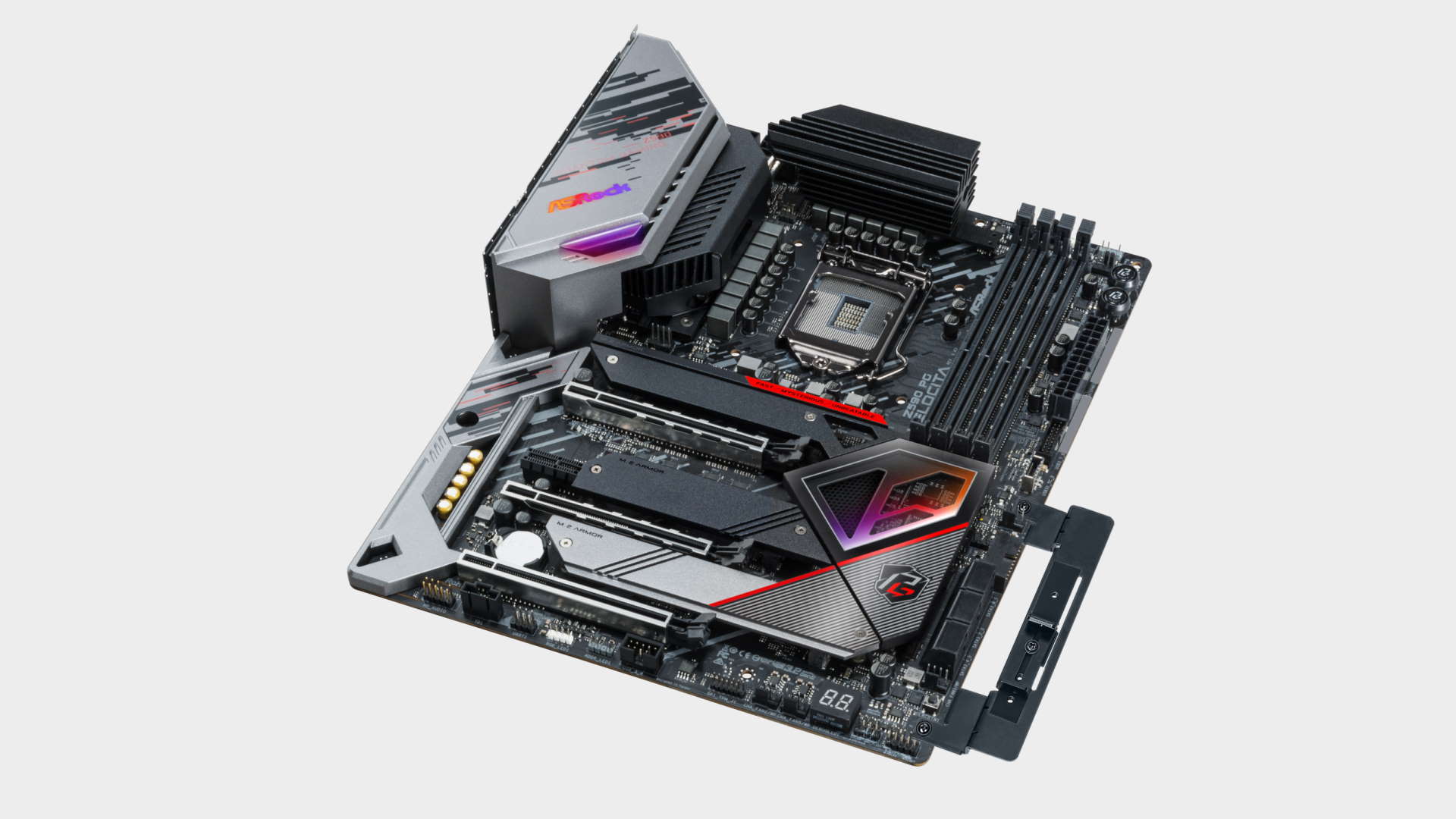Our Verdict
The look might not be for everyone but the ASRock Z590 PG Velocita has a lot of connectivity options for a board at this price, but some slight BIOS immaturity just holds it back from greatness.
For
- Dual LAN
- Comprehensive I/O
- Good VRM
Against
- The BIOS isn’t yet 100%
- No USB 3.2 Gen 2x2 on the rear panel
PC Gamer's got your back
The ASRock Z590 PG Velocita is part of the relatively new Velocita product family. It aims to appeal to gamers looking for a premium tier gaming board without wanting to shell out the big dollars for things like add-in cards, water blocks, or 10G Lan. It sits below the Taichi and above the mainstream lines in ASRock’s product stack; think of it like Asus' TUF Gaming range of boards.
The X570 Velocita and the Z490 Velocita were well received. But does the new Z590 flavour have what it takes to compete in a cut-throat competitive market?
The Z590 Velocita features a bold design, complete with a little PCB inside the chipset heatsink. The metallic grey, red and black theme looks kind of busy. The heatsinks are a bit bland but they work well and aren’t orange with pink polka dots so that’s fine.
You get the now-usual Z590 fare of three M.2 slots and six SATA ports. Eight SATA ports is a feature that’s becoming ever rarer as SATA drives go out of fashion.
Form factor: ATX
Socket: LGA 1200
CPU support: Intel 10th & 11th Gen processors
Storage: 3x M.2; 6x SATA
USB: 1x USB 3.2 Gen2x2, 2x USB 3.2 Gen 2, 10x USB 3.1 Gen 1, 4x USB 2.0
Video outputs: 1x HDMI, 1x DP 1.4
Network: Killer AX1675x Wi-Fi 6E; Killer E3100G 2.5G and Intel I219V 1G LAN
Audio: Realtek ALC1220 7.1 Channel HD Audio
Price: $340
ASRock includes some noteworthy additional accessories. The first is a graphics card retention bracket to help prevent GPU sag and, in a bit of a blast from the past, a USB PCIe bracket with a couple of additional ports. Add those to the ten ports on the rear I/O, that would give you a total of twelve ports. That’s enough for all your peripherals plus the all-important plasma balls to give you that mad scientist aesthetic. It also comes with an optional VRM cooling fan, though it is tiny! Thankfully there’s no need for it as long as you have good case airflow.
Given the steep power requirements of the high-end Rocket lake CPUs, we’ve spent time examining and testing the VRM solutions of all the boards we review, especially since Core i9 CPUs have the power guzzling Adaptive Boost feature.
The Velocita includes a 14-phase VRM with 60a chokes. This is more than enough current to drive an AVX loaded Core i9 11900K. Though it can’t match the current capability of the more expensive boards, they’re usually designed with extreme overclocking in mind. If you’re one of the few that want to do that, keep an eye out for the Z590 OC Formula.
The Velocita’s heatsinks are chunky enough but don’t have a huge amount of surface area. When presented with an AVX-enabled Adaptive Boost load, the VRM returned a temperature of 69°C. That makes it one of the warmer boards we’ve tested, but it’s well within spec. With a few cheap exceptions, we’re mostly impressed with the VRM of Z590 boards.
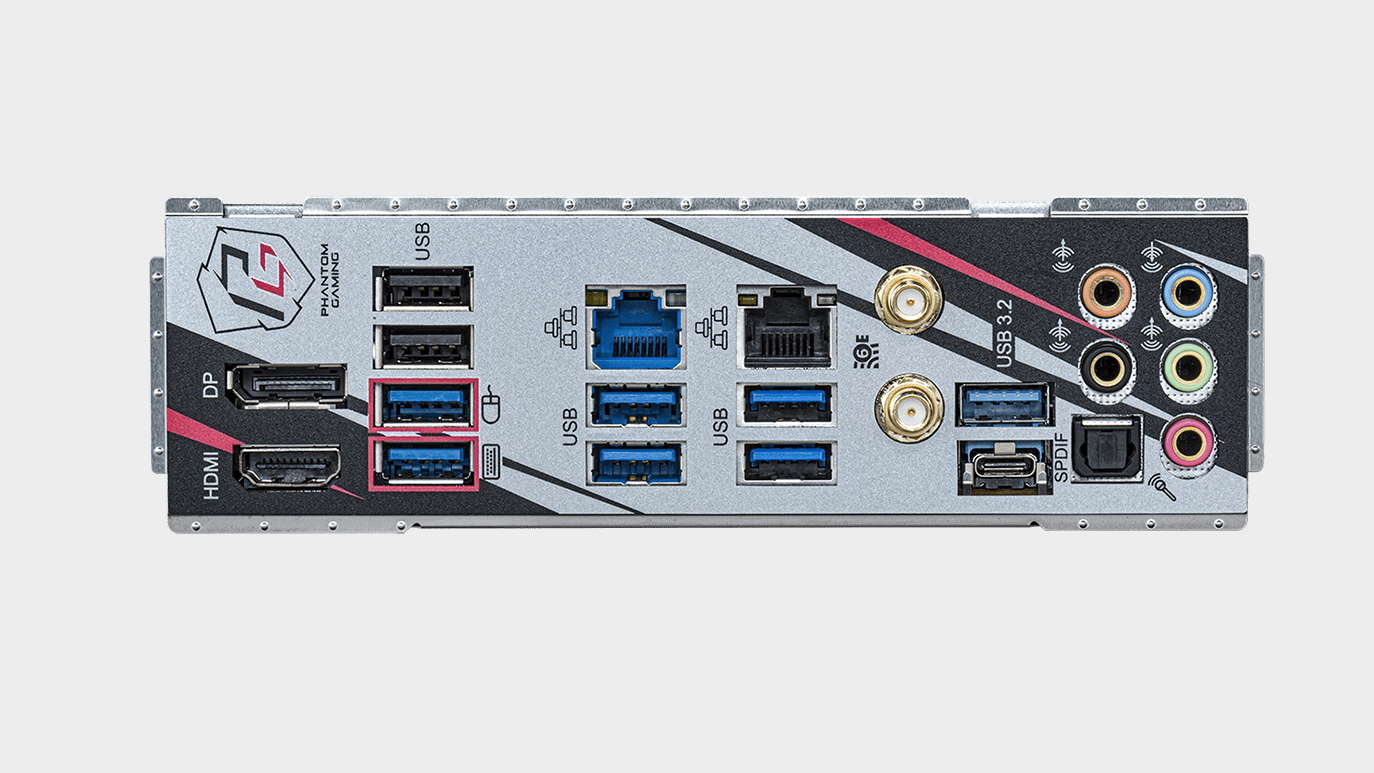
The rear I/O is particularly well equipped... with one notable omission. There’s no USB Gen 2x2 port, though there is an onboard header for one. Honestly, we’d prefer to see that present on the back panel rather than having to rely on a chassis to provide an extension. Two USB Gen 2 ports are joined by six Gen 1 ports and two 2.0 ports.
There aren’t all that many boards with dual LAN this time around, which could be a deal breaker for some users. Also note the inclusion of Killer network controllers, with Killer AX1675X Wi-Fi 6E and E3100G 2.5G controllers onboard. Killer tends to get a bit of a love/hate reception but most of that stems from software bloat. Now that Intel owns Rivet networks, it will be interesting to see where the branding goes. In addition to the Killer 2.5G Lan, you get a 1G Intel I219V controller. You also get S/PDIF optical out and HDMI and DisplayPort connections.
System performance
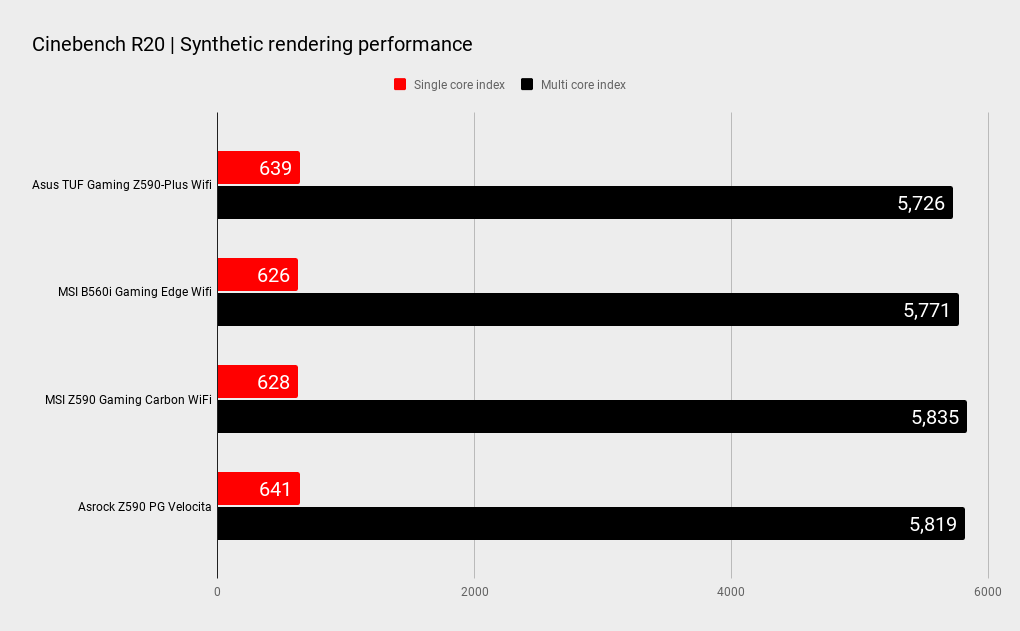
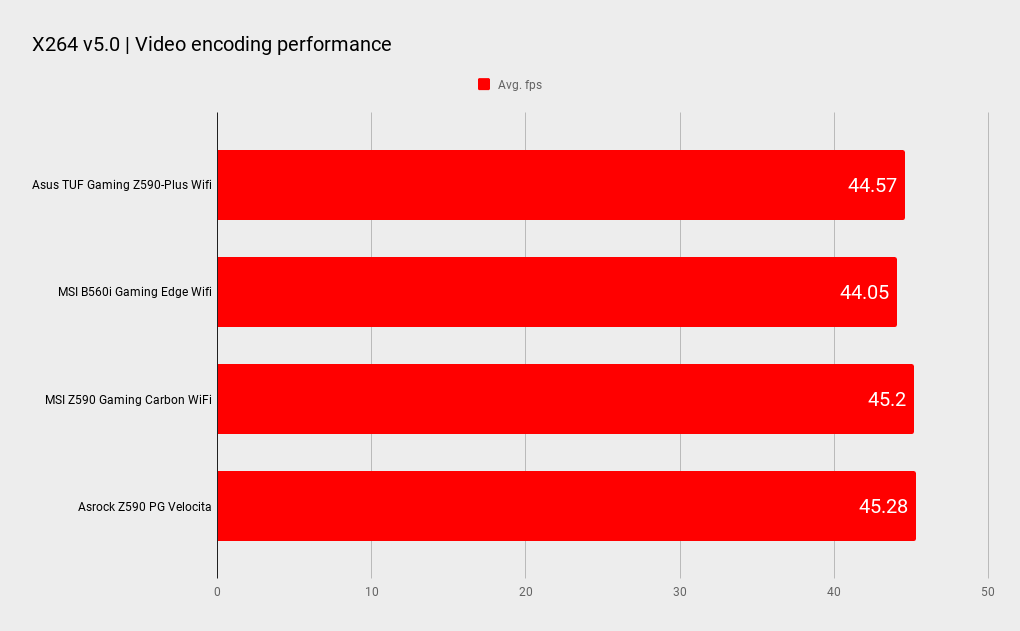
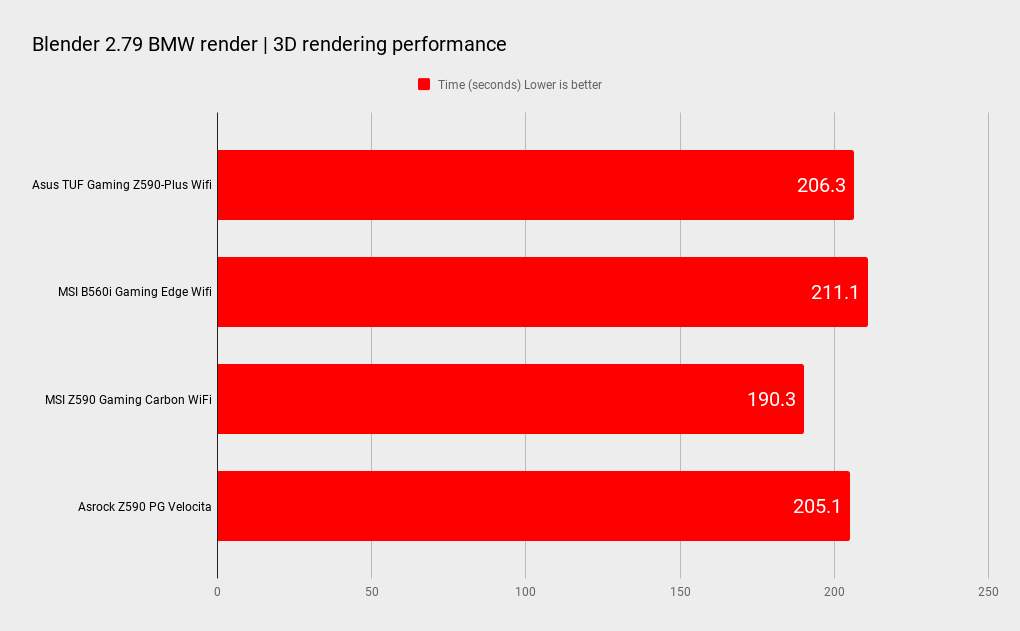
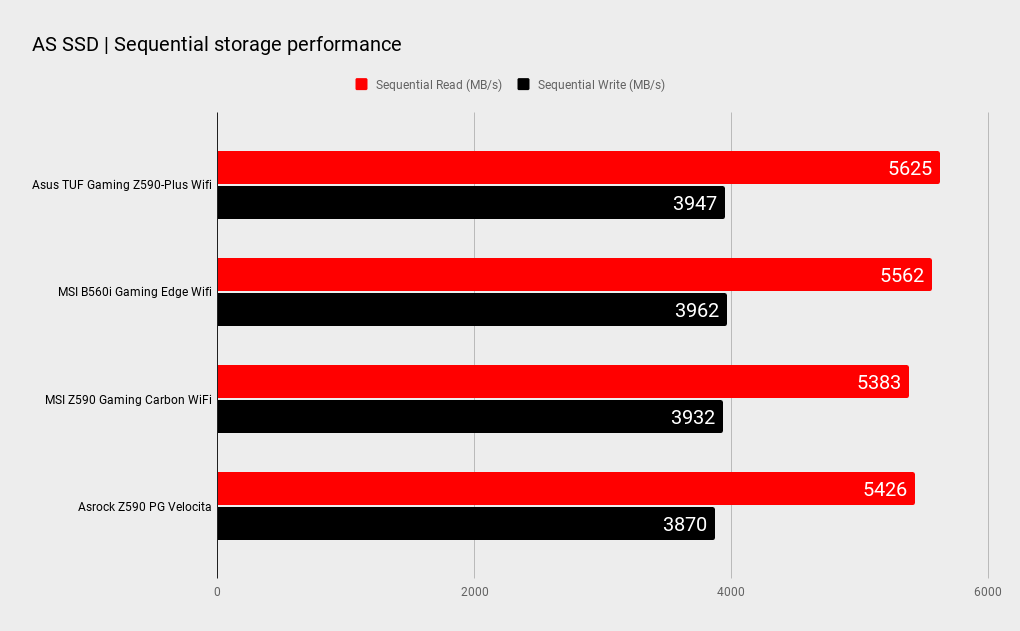
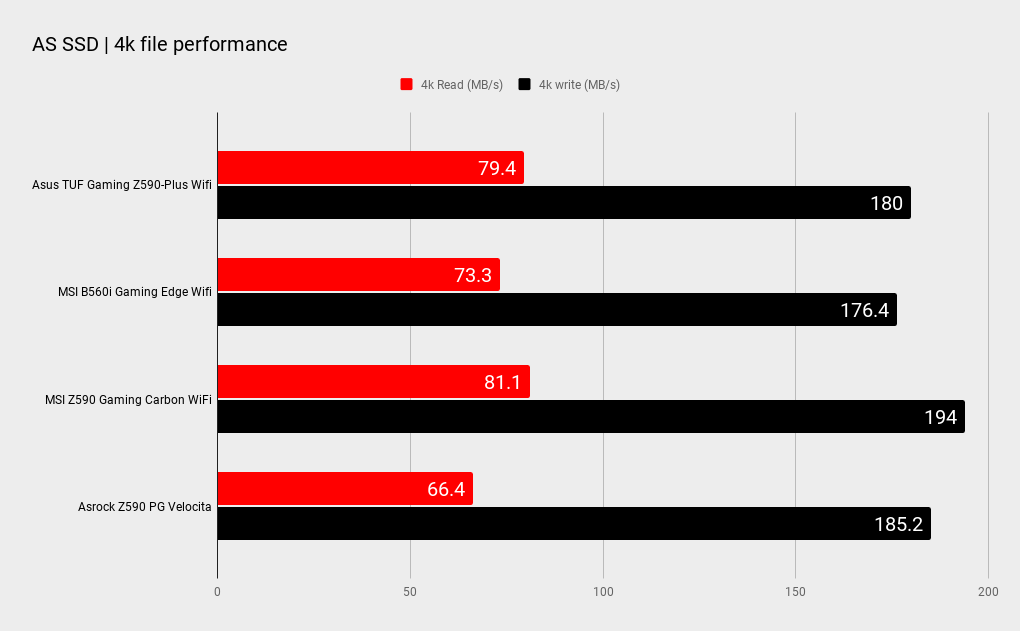
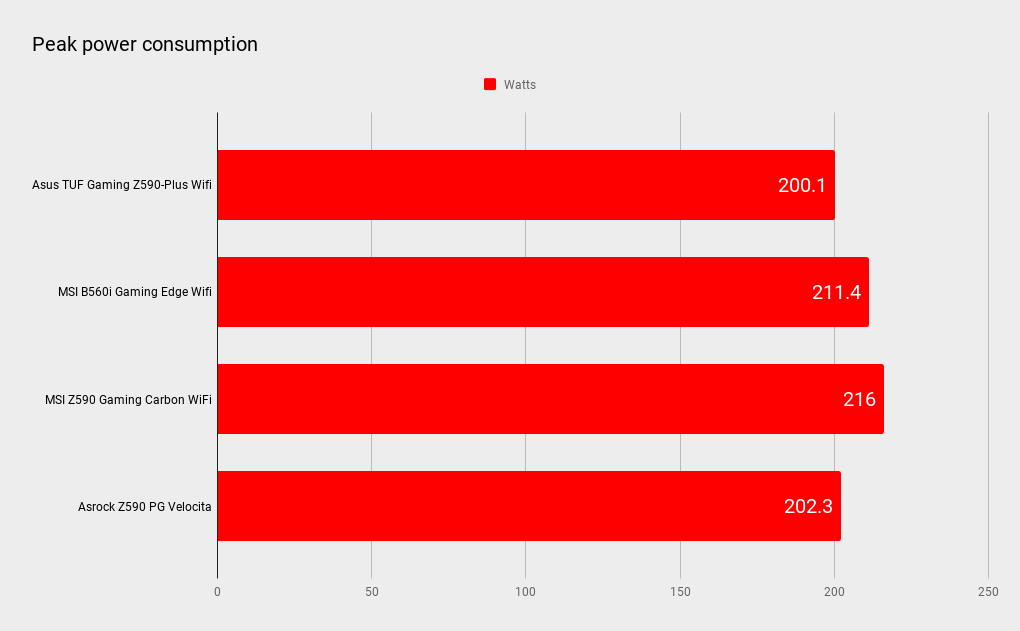
Gaming performance
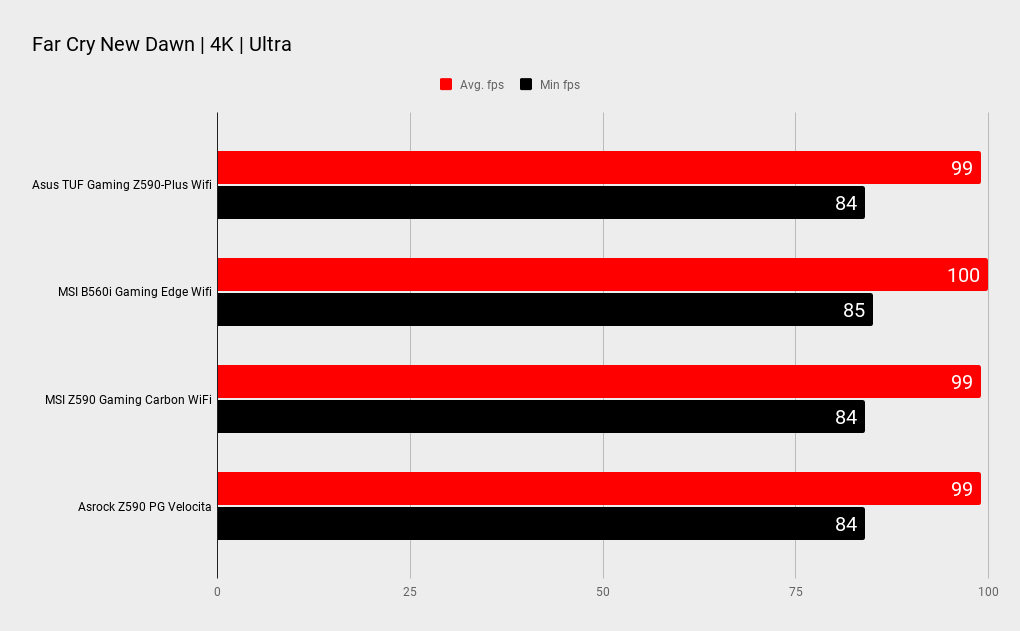
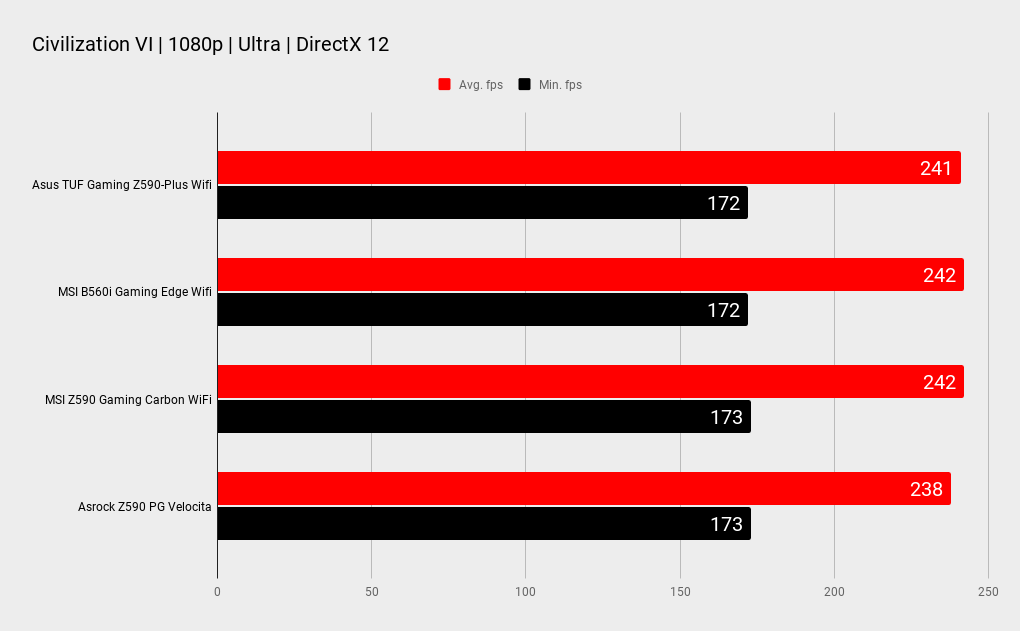
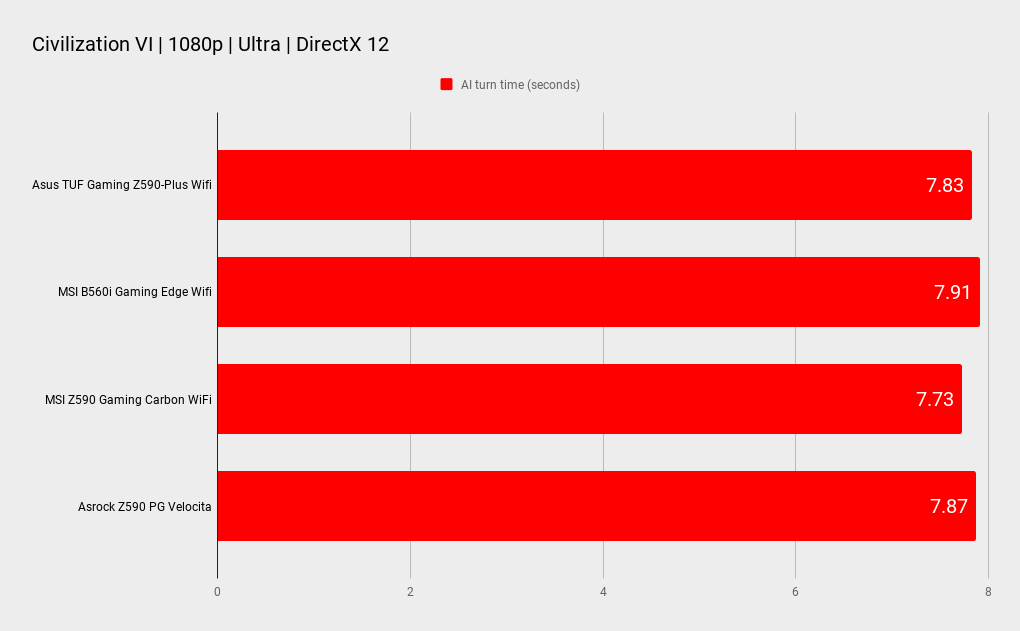
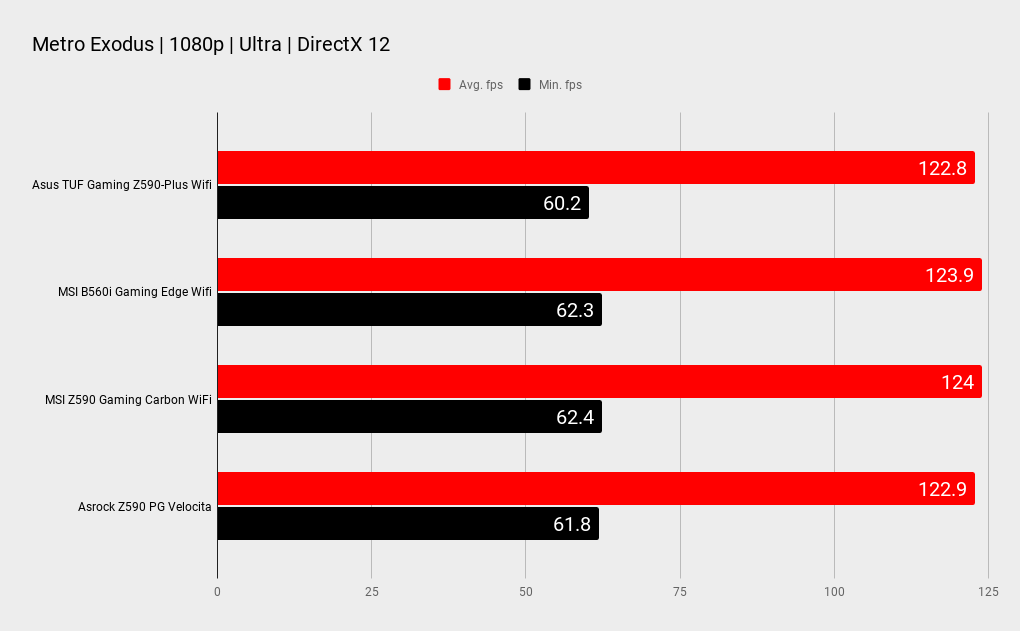

When Intel’s default power settings are applied, the board performs as we’d expect. We believe ASRock applies some tighter memory sub timings as it performs well in really bandwidth reliant tests. One area that it lagged was in the AS SSD drive performance test, where the random read and write performance was behind the rest. We’re sure that a BIOS update or two will iron out a few kinks.
On the topic of the BIOS, the latest beta we had on hand at the time of testing resulted in some very slow AVX results. After changing the CPU current setting to unlimited, the board then returned the same results as the other Z590s we've tested. This goes to show that a Core i9 11900K with AB is a massive stress test for a board and one that manufacturers aren’t all that comfortable with. A 300W+ load is as much as 64-core Threadripper.
The Velocita passed all of our testing with ease though and in fact it wins its fair share of multi-threaded and gaming tests too.
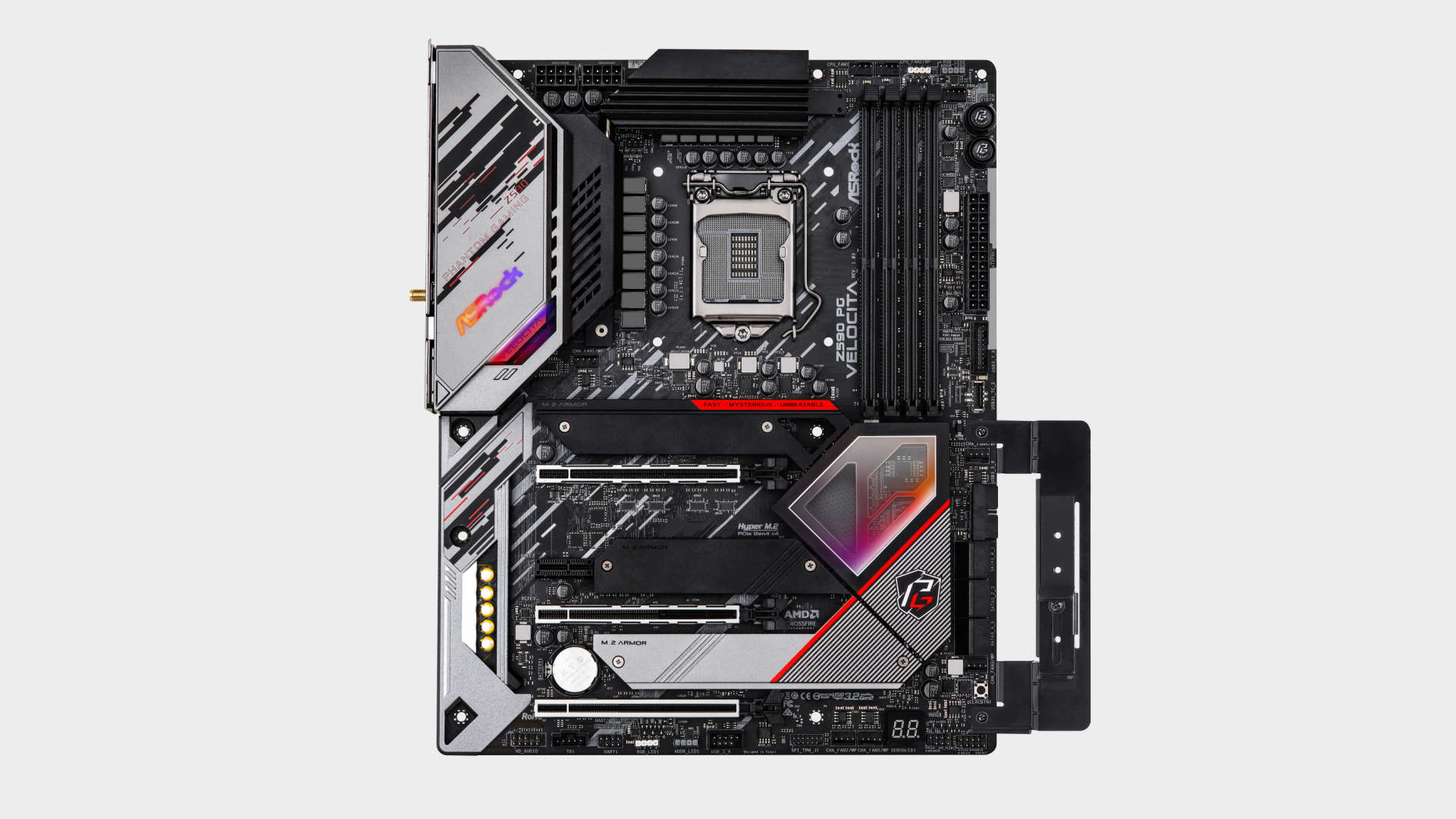
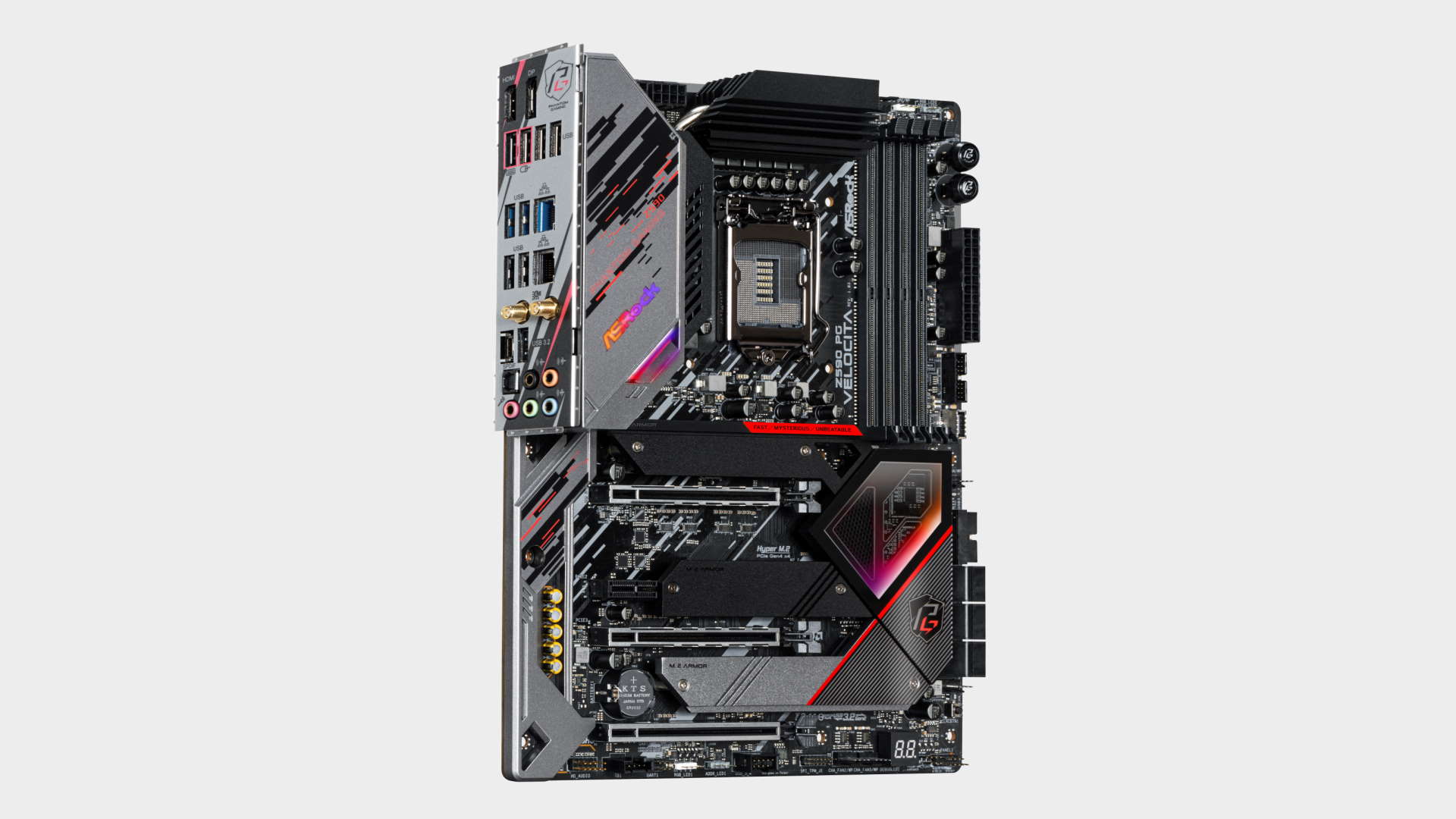
At around $340 USD, the Velocita faces some tough competition in its price range but it does have its advantages. It’s got a strong I/O (though no 20Gb/s USB at the rear) and a decent VRM design for its price.
The Velocita is yet another example of the way ASRock has a tendency to include a little feature here or there that another board at the same price doesn’t have. For example, dual LAN, or the PCIe brackets or the power and reset buttons. They’re not gamechangers, but little things add up, and highlights what this new mid-tier range of ASRock boards brings to the table.
We do feel the Z590 PG Velocita, however, is a BIOS or two away from reaching a state of maturity. That’s just a matter of a little tuning. If you’re in the market for a board at this price, the ASRock has a lot to offer, and likely a little more once its firmware has been given a little more love too.
The look might not be for everyone but the ASRock Z590 PG Velocita has a lot of connectivity options for a board at this price, but some slight BIOS immaturity just holds it back from greatness.

Chris' gaming experiences go back to the mid-nineties when he conned his parents into buying an 'educational PC' that was conveniently overpowered to play Doom and Tie Fighter. He developed a love of extreme overclocking that destroyed his savings despite the cheaper hardware on offer via his job at a PC store. To afford more LN2 he began moonlighting as a reviewer for VR-Zone before jumping the fence to work for MSI Australia. Since then, he's gone back to journalism, enthusiastically reviewing the latest and greatest components for PC & Tech Authority, PC Powerplay and currently Australian Personal Computer magazine and PC Gamer. Chris still puts far too many hours into Borderlands 3, always striving to become a more efficient killer.
